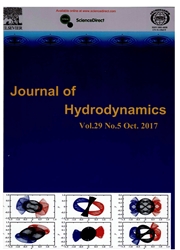

 中文摘要:
中文摘要:
The hemodynamic interactions of red blood cells(RBCs) in a microcapillary flow are investigated in this paper. This kind of interaction is considered as the non-contact mutual interaction of cells, which is important in the suspension flow of blood, but not sufficiently understood. The distributed Lagrange multiplier/fictitious domain method in the lattice Boltzmann framework is used to solve the suspension of the RBCs. The modification of the flow due to the cells, the dependence of the cell deformation on the flow and the cell-cell interaction via the fluid are discussed. It is revealed that the long-range hydrodynamic interaction with a long interacting distance, more than about 5 times of the RBC equivalent radius, mainly has effect on the rheology properties of the suspension, such as the mean velocity, and the short-range interaction is sensitive to the shape of the cell in the microcapillary flow. The flow velocity around the cell plays a key role in the cell deformation. In the current configuration of the flow and cells, the cells repel each other along the capillary.
 英文摘要:
英文摘要:
The hemodynamic interactions of red blood cells (RBCs) in a microcapillary flow are investigated in this paper. This kind of interaction is considered as the non-contact mutual interaction of cells, which is important in the suspension flow of blood, but not sufficiently understood. The distributed Lagrange multiplier/fictitious domain method in the lattice Boltzmann framework is used to solve the suspension of the RBCs. The modification of the flow due to the cells, the dependence of the cell deformation on the flow and the cell-cell interaction via the fluid are discussed. It is revealed that the long-range hydrodynamic interaction with a long interacting distance, more than about 5 times of the RBC equivalent radius, mainly has effect on the rheology properties of the suspension, such as the mean velocity, and the short-range interaction is sensitive to the shape of the cell in the microcapillary flow. The flow velocity around the cell plays a key role in the cell deformation. In the current configuration of the flow and cells, the cells repel each other along the capillary.
 同期刊论文项目
同期刊论文项目
 同项目期刊论文
同项目期刊论文
 期刊信息
期刊信息
